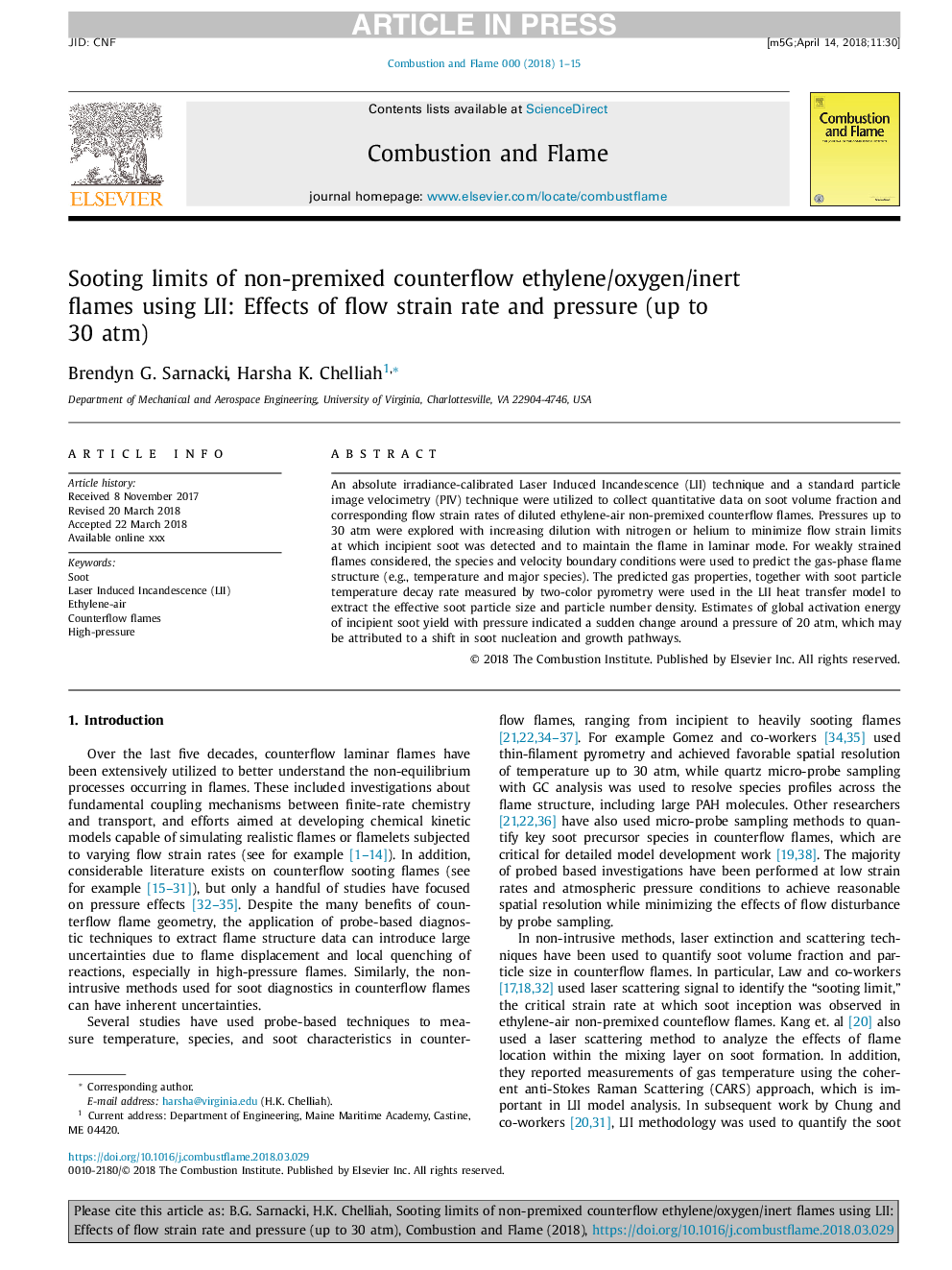| Article ID | Journal | Published Year | Pages | File Type |
|---|---|---|---|---|
| 6593433 | Combustion and Flame | 2018 | 15 Pages |
Abstract
An absolute irradiance-calibrated Laser Induced Incandescence (LII) technique and a standard particle image velocimetry (PIV) technique were utilized to collect quantitative data on soot volume fraction and corresponding flow strain rates of diluted ethylene-air non-premixed counterflow flames. Pressures up to 30Â atm were explored with increasing dilution with nitrogen or helium to minimize flow strain limits at which incipient soot was detected and to maintain the flame in laminar mode. For weakly strained flames considered, the species and velocity boundary conditions were used to predict the gas-phase flame structure (e.g., temperature and major species). The predicted gas properties, together with soot particle temperature decay rate measured by two-color pyrometry were used in the LII heat transfer model to extract the effective soot particle size and particle number density. Estimates of global activation energy of incipient soot yield with pressure indicated a sudden change around a pressure of 20Â atm, which may be attributed to a shift in soot nucleation and growth pathways.
Keywords
Related Topics
Physical Sciences and Engineering
Chemical Engineering
Chemical Engineering (General)
Authors
Brendyn G. Sarnacki, Harsha K. Chelliah,
